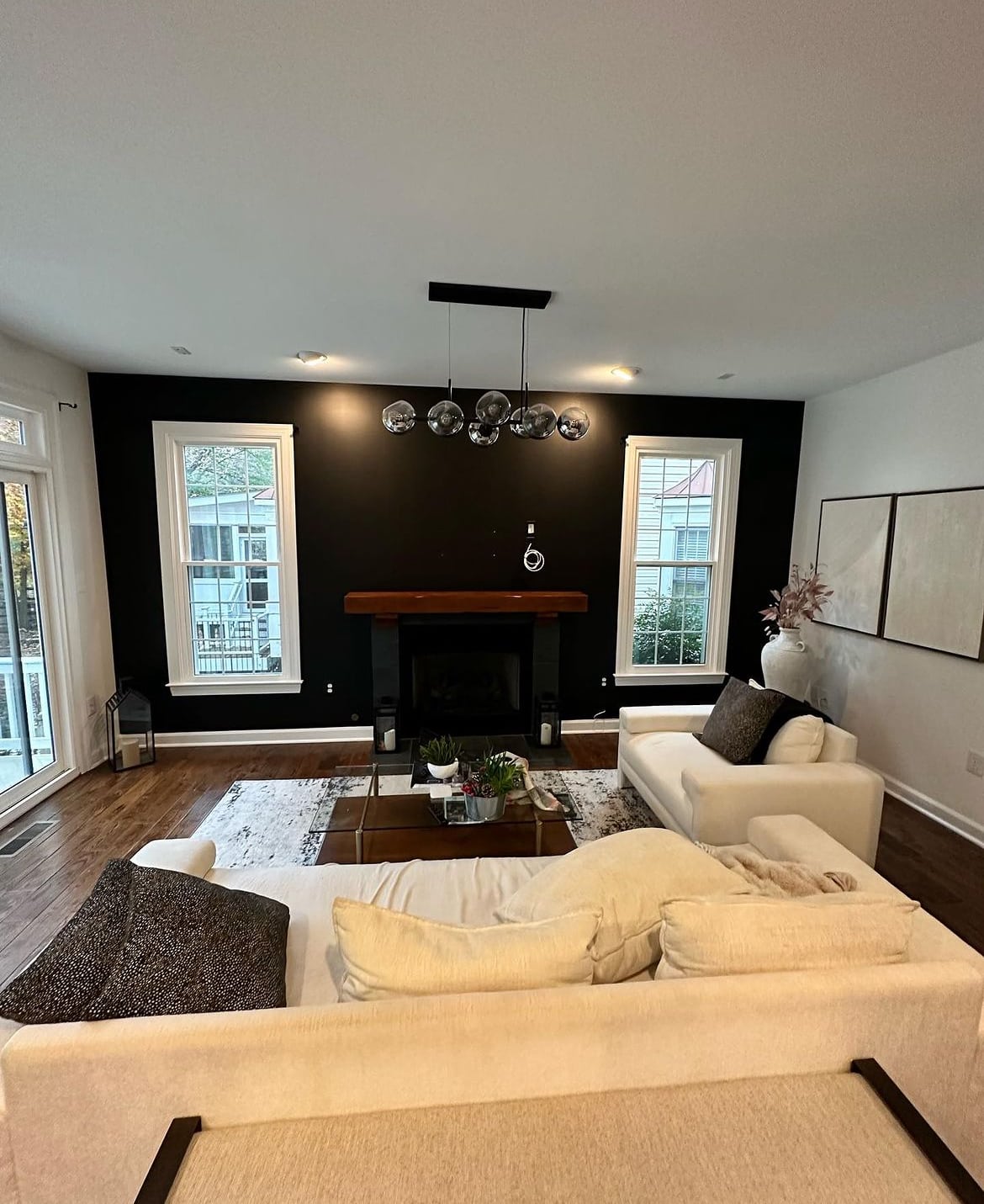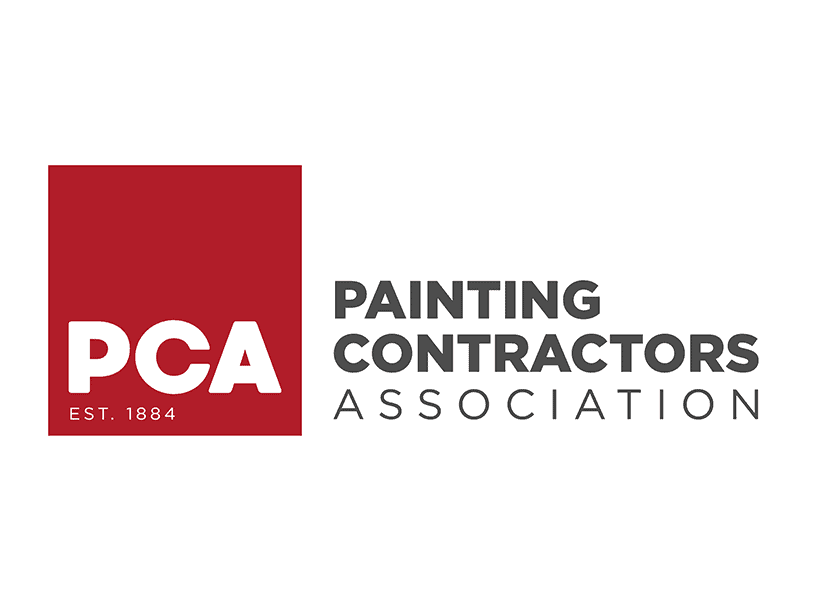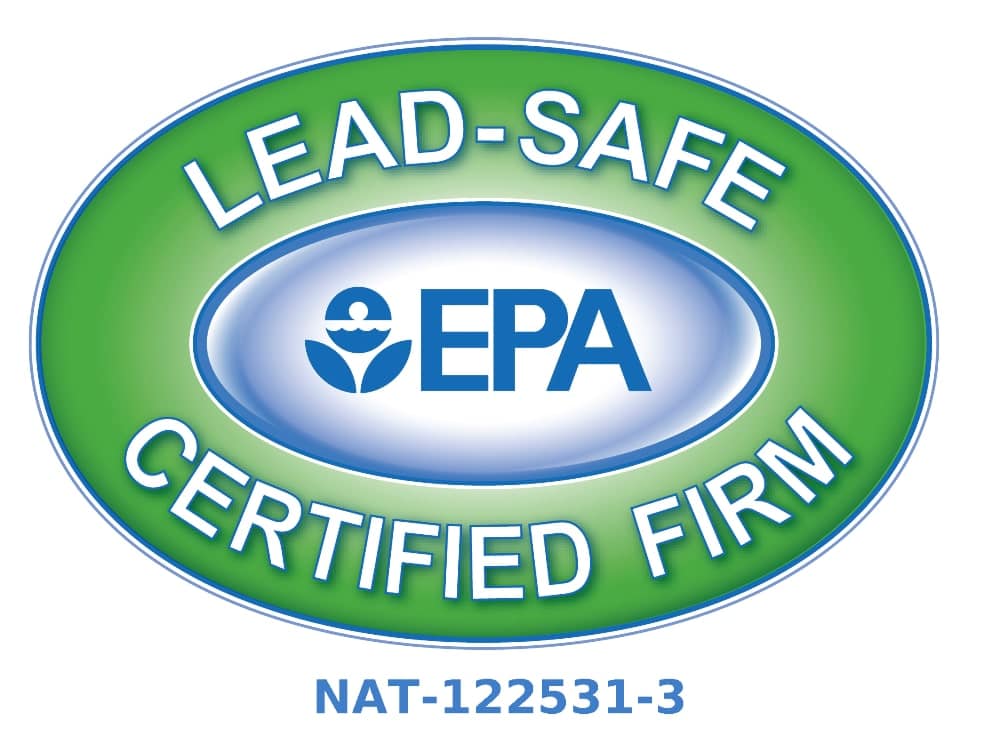
28 Dec How Often Do I need to Repaint Interior Walls?
One of the most common questions professional painters are asked is, “How long does interior paint last once it’s applied on a wall?” Unfortunately, it’s not an easy question to answer. Several factors can affect the lifespan of a paint job. Generally, however, a well-done interior paint job can last five to 10 years or longer. Below, we discuss what factors can affect your paint job.
A Few Facts First
As we’ve said, there are a few things that will affect your paint job. If you’re trying to determine if it’s time to repaint, you’ll want to first ask yourself these questions and use their combined answers as a reference point:
-
-
-
- When did you last paint?
- Was it professionally painted, and did they do a good job?
- What type of paint brand and finish was used?
- Is the room you want to repaint a high-traffic, high-use, or high-touch space? For example, kitchens, hallways, children’s bedrooms, and playrooms get a lot of wear and tear.
- Lastly, do your walls look like they need repainting? Are they scuffed, fading, or peeling?
-
-
The last two questions might provide your most vital guidance. It’s easy to decide it’s time to repaint because your walls practically beg for it! Even so, let’s look at some other factors that might affect your decision to repaint.
Paint Quality and Types
Choose high-quality paint – or make sure your painter does – for longer-lasting paintwork. Better quality paint lasts longer, while cheaper options may require repainting sooner due to lower durability.
In general, interior paints can be classified into two main categories or types: oil-based and water-based.
Oil-Based Paint
-
-
-
- Oil-based (solvent-based) paints are more durable, withstanding daily wear and tear. It’s typically used in high-traffic rooms and spaces.
- You can use organic oil-based paints, but they are typically more expensive and take longer to dry.
- Inorganic oil-based paints are cheaper and more durable but retain a powerful odor for a while after being used.
- All oil-based paints take much longer to dry than water-based paints.
-
-
Water-Based Paint
-
-
-
- These are also known as latex paints.
- They tend to be the go-to for interior painting because they are easy to use, dry quickly, and don’t have a residual odor or the smell is relatively short-lived compared to oil-based paints.
- Latex paints are less durable and generally more expensive than their oil-based paints.
- It is easier to clean up and lacks the odor of oil-based paints.
-
-
Paint Finish Matters
The paint finish plays a crucial role in determining its longevity. Options range from a flat or matte finish (non-reflective) to very shiny. The level of glossiness has a direct impact on the ease of cleaning the painted finish. Keep in mind the name of the finish tends to vary by paint manufacturer, so focus on the description of the finish rather than the name.
-
-
-
- Flat/Matte: This is the least reflective type of paint finish – meaning it has no reflective qualities. It’s best used in low-traffic areas because it’s the most challenging paint finish to clean without affecting the paint’s integrity. Scuff a matt finish, and you’ll likely have to repaint it because cleaning it will leave a mark. Flat finishes are good for disguising sheetrock flaws, making them popular with builders.
- Satin: Satin is a relatively low-reflecting finish with a hint of gloss. It’s a good option for those who don’t want a full flat finish.
- Eggshell: Eggshell is a step up from satin with a slight gloss appearance. It’s easy to clean, making it a good option for medium to higher-traffic areas. This is a popular finish with interior designers.
- Semi-Gloss: Semi-gloss has more reflective qualities than eggshell. It’s also more durable. Semi-gloss (along with high-gloss paint) is a popular finish for high-traffic areas, such as bathrooms, cabinets, and kitchens.
- High Gloss: High gloss is the most reflective and durable paint finish. It’s typically used for wood trim, like baseboards and moldings, since it’s the most decorative and the easiest to clean.
-
-
Other Factors to Consider with Interior Paint
Now that we’ve covered the impact that paint types, quality, and finish have on paint longevity, let’s look at other factors that can affect the need to repaint.
-
-
-
- Maintenance and Condition: A poorly maintained and unevenly painted wall requires more frequent repainting than a well-maintained and sanded wall.
- Paint Coats: The more coats, the longer that paint job should last. A single coat will not last anywhere as long as a double coat of paint.
- Purpose of Room: High-traffic rooms, such as a bathroom and kitchens, get more use and will need repainting sooner than low-traffic rooms, like a study or primary suite.
- Sun Exposure: Sun exposure can lead to paint fading more quickly, particularly if a lower-quality paint is used. We recommend putting a protective UV film on your windows or using window treatments to control light exposure during the sunniest part of the day.
- Professionally painted walls: Professionally painted walls by a reputable paint contractor, like us at Home Works, tend to last longer. We know the best paint type, finish, and quality to use. We know the best methods for application and use the right equipment and tools.
-
-
Please feel free to reach out with any questions, or use our online scheduler to set up a free estimate today!
FAQ
How often should I repaint different rooms in my home?
The ideal repainting schedule depends on each room’s use and exposure. High-traffic areas like hallways and corridors generally need repainting every 2–3 years. Kitchens and bathrooms should be repainted every 3–4 years. Living rooms and dining rooms usually require fresh paint every 5–7 years, while adult bedrooms can last 7–10 years unless there’s heavy use or a desire for a new look. Children’s bedrooms often need repainting every 2–5 years due to increased activity and changing preferences.
What signs indicate it’s time to repaint my interior walls?
Look for fading color, persistent stains, scuff marks, peeling or bubbling paint, and cracks or chips. These signs suggest the paint’s protective qualities are wearing off and it’s time for a refresh.
Does the quality of paint and application affect how long my walls stay looking fresh?
Yes, higher-quality paints and professional application can significantly extend the lifespan of your paint job—sometimes up to 10 years or more. Proper wall preparation, priming, and choosing the right finish all help your paint last longer.
Are there environmental factors that can shorten the lifespan of interior paint?
Absolutely. Sun exposure can cause fading, especially in rooms with a lot of natural light. Moisture in kitchens and bathrooms can lead to peeling or mold. Regular cleaning and using blinds or curtains to limit sun exposure can help extend the life of your paint.
Is it okay to repaint just one room or area at a time?
Yes, many homeowners repaint rooms individually based on their condition and use. Hallways and children’s rooms might need more frequent attention, while less-used spaces can go longer between repaints. This approach helps manage costs and keeps your home looking its best.

Mike Katounas is the owner of Home Works Painting, a painting business in Northern Virginia. He has over 15 years of experience in residential interior and exterior painting, drywall installation/repair, carpentry, wallpaper removal, power washing, commercial painting, color consultation, and staining/sealing. Their service areas include Chantilly, Fairfax, Herndon, Oakton, Reston. Mike takes pride in his work, and he always follows a strict code of conduct that includes the use of quality paint, a clean workspace, and an honest, respectful approach to his customers.












Sorry, the comment form is closed at this time.